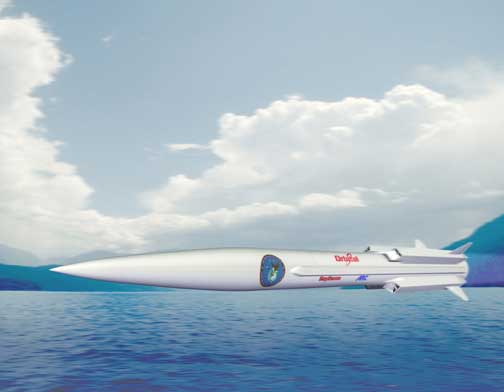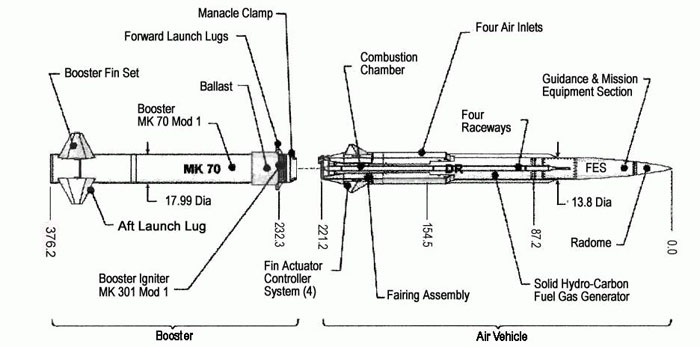.

Orbital Launches 40th Coyote Supersonic Ramjet-Powered Target Missile for U.S. Navy
-- Coyote Naval Targets Program Marks 10 Years of Successful Development
and Operational Flights --
-- 34 Low-Altitude and 6 High-Altitude Launches Conducted Since 2003 --
(Dulles, VA 10 September 2013) – Orbital Sciences Corporation (NYSE: ORB), one of the world’s leading space technology companies, today announced it successfully launched its 40th Coyote supersonic sea-skimming target (SSST) vehicle for the U.S. Navy. The mission included consecutive launches of two Coyote missiles from the Pacific Missile Range in Hawaii. Each of the Coyote missiles was rail-launched from the coast, executed their planned flight patterns and provided a successful target presentation for the customer.
“Since the flight test program began in 2003, we have achieved a very high rate of success with the Coyote SSST system,” said Orbital’s Coyote Program Manager Keven Leith. “Tests of this nature can be costly for customers to conduct from a logistics standpoint. However, the Coyote’s low production cost and outstanding operational track record have provided an excellent value for our customers. Our dedicated SSST product team has worked hard to ensure the success of this program.”
The Coyote program, managed by the Naval Air Systems Command (NAVAIR) at the Patuxent River Naval Air Station in Maryland, launched the first test flight of the unguided target in January 2003. This was followed by six additional test flights, each with increasing capabilities, in 2003 and 2004. In 2005, the vehicle began full operations, now having launched 40 targets to date with an extremely high success rate. Coyote targets have been launched from three ranges including San Nicholas Island, California; Kauai, Hawaii; and Levant, France. Additional launch site capabilities are planned for the future to support the operations of current and new customers.
The design of the Coyote target vehicle integrates a four-inlet, solid-fuel ducted-rocket ramjet propulsion system into a compact missile airframe 18 feet long and 14 inches in diameter. Ramjet supersonic takeover speed is achieved using a decommissioned Navy MK 70 solid rocket motor for the first stage. Rail-launched from naval test and training ranges, the highly maneuverable Coyote has two optional flight trajectories: sea-skimmer and high-altitude. Originally designed as a sea-skimming supersonic target, Coyote has completed 34 low-altitude, Mach 2.5-class flights since 2003. These missions included altitudes as low as 15 feet, maneuverability up to 12 Gs of lateral acceleration, and ranges of up to 55 nautical miles. Introduced three years ago, the high-altitude variant of Coyote has completed six Mach 3.25-class flights since 2010. These included altitudes up to 40,000 feet, power dives at user-specified downward angles, and ranges up to 120 nautical miles.
Coyote Program Overview
Orbital was awarded an initial development contract in 2000 to meet the U.S. Navy’s requirement for an affordable SSST system to simulate high-speed anti-ship cruise missiles for fleet training and weapon systems research, development, test and evaluation. Orbital and the Navy completed the development phase of the program with a series of successful test flights between 2003 and 2005.
Since that time, Orbital has received multiple orders from the U.S. Navy and from allied navies. More than 100 units have been ordered to date (including the early development and test vehicles) of which 89 have been delivered to customers. Orbital has supported 40 Coyote launches, which include 10 flight test or demonstration launches and 30 operational missions.
Orbital developed and is manufacturing Coyote vehicles at its launch vehicle engineering and production facility in Chandler, Arizona. Orbital’s major subcontractors include Aerojet Rocketdyne in Gainesville, Virginia, and Sacramento, California, for the solid-fuel ducted-rocket motor, and Goodrich Sensors & Integrated Systems in Vergennes, Vermont, for the vehicle’s fin actuation system.
.

Start von Coyote 2004
.
Orbital Sciences Corporation announced today that it carried out another successful flight test of the GQM-163A Supersonic Sea-Skimming Target (SSST) system for the United States Naval Air Systems Command (NAVAIR) on August 27, 2004. The flight test, conducted at the Navy's missile test range in southern California, is part of a series of flights Orbital will conduct under the company's SSST Engineering and Manufacturing Development (EMD) contract from NAVAIR. Orbital was awarded the EMD contract in 2000 to meet the Navy's requirement for an affordable SSST to simulate supersonic anti-ship cruise missiles for fleet training and weapon systems research, development, test and evaluation. Orbital is scheduled to conduct several more flight tests of the Coyote target vehicle through the end of the year.
"We are very pleased with the results of the recent flight test of the Coyote target vehicle," said Mr. Keven Leith, Vice President of Navy Programs for Orbital's Launch Systems Group. "By meeting all the objectives for the flight test, we believe we are well down the road toward moving the program from its developmental phase to providing the Navy with a robust operational anti-ship target system."
The GQM-163A "Coyote" target missile design integrates a four-inlet, solid-fuel ducted rocket ramjet propulsion system into a compact missile airframe 18 feet long and 14 inches in diameter.
Ramjet supersonic takeover speed is achieved using a decommissioned Navy MK 70 solid rocket motor for the first stage.
Rail-launched from Navy test and training ranges, the highly maneuverable GQM-163A Coyote achieves cruise speeds of Mach 2.5+ following the separation of the MK 70 first-stage booster. The range of the target vehicle system is approximately 50 nautical miles at altitudes of less than 20 feet above the sea surface.
This most recent flight test of the GQM-163A Coyote vehicle was the second consecutive success for the program, following a successful flight carried out earlier this year in May. The primary objectives for this test, all of which were achieved, included the verification of booster ignition and stable first stage flight, the verification of the transition of the ducted rocket ramjet from booster separation to inlet start, and verification of the ducted rocket ramjet ignition, navigation to waypoint capability, verification of the laser altimeter performance, and initial horizontal weave and vertical maneuver performance verification. In addition, the test target missile was heavily instrumented in order to collect flight environment data to refine aerodynamic and guidance models for future missions.
Orbital is currently the only U.S. Department of Defense prime contractor to be both developing and operating ramjet-powered missile systems. In addition to developing the GQM-163A Coyote, Orbital provides the Navy with launch services for the MQM-8 VANDAL SSST. The MQM-8 VANDAL is based on the liquid-fuel ramjet-powered Talos missile and provides the Navy with a legacy SSST until the more capable GQM-163A Coyote is operational.
Orbital is developing and manufacturing the GQM-163A Coyote at its launch vehicle engineering and production facility in Chandler, Arizona. Orbital's major subcontractors include Aerojet Corporation in Gainesville, Virginia and Sacramento, California for the solid-fuel ducted rocket motor and CEi in Sacramento, California for the vehicle's avionics system.
Orbital develops and manufactures small space and rocket systems for commercial, military and civil government customers. The company's primary products are satellites and launch vehicles, including low-orbit, geosynchronous and planetary spacecraft for communications, remote sensing, scientific and defense missions; ground- and air-launched rockets that deliver satellites into orbit; and missile defense systems that are used as interceptor and target vehicles. Orbital also offers space-related technical services to government agencies and develops and builds satellite-based transportation management systems for public transit agencies and private vehicle fleet operators.
.

Start von Coyote 2012
.

Quelle: Orbital, US-NAVY
5589 Views
